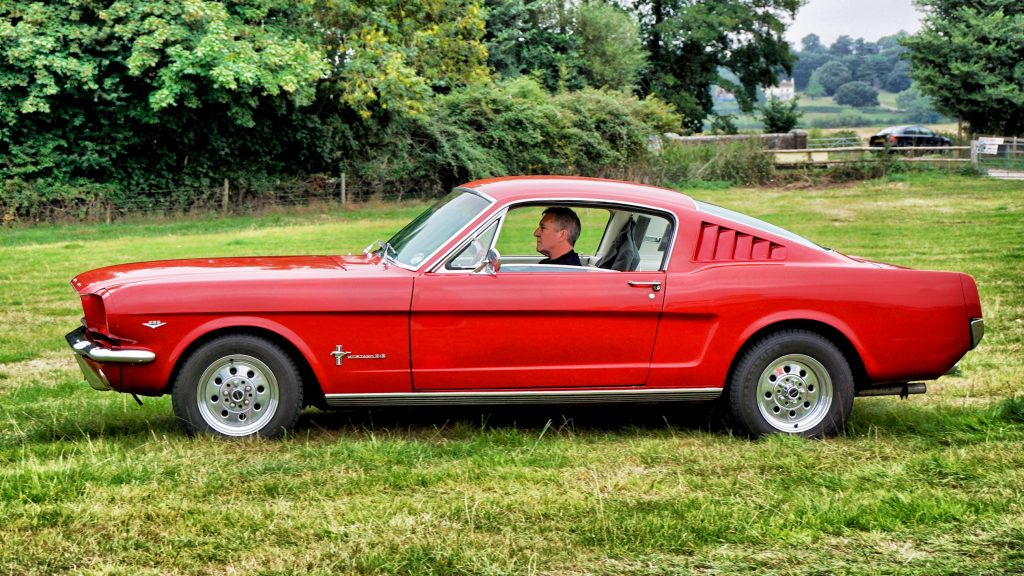History
The Ford Mustang was introduced on April 17th, 1964. It was based on the compact Ford Falcon and aimed at the post-war baby-boomer generation. Designed as sporty-looking and very customizable car, it was an instant success that sold in huge numbers and laid foundation to the “Pony Car” segment.
The cars built from 1964 to 1973 are referred to as the first generation model. They actually consist of four different models/body styles. The original model was built from 1964 to 1966. The early models are referred to as 1964 1/2 models and differ slightly from the 1965/66 models, e.g. by the use of a generator instead of an alternator. Originally available as two-door coupe (hard top) and convertible, the fastback model was added for the 1965 model year.
The 1967 model year saw the introduction of a new, larger model that could accommodate the big-block FE series engine. A 1968 Mustang Fastback is the legendary car driven by Steve McQueen in Bullitt. The Mustang was further enlarged for the 1969 model year that also saw sharper edges. 1969 also saw the introduction of three interesting sub-models: The Mach 1 (a sporty looking option), the Boss 302 (base model for Trans Am road racing), and the Boss 429 that served to homologate the 429 engine for NASCAR racing. The fastback was now called the sports roof.
The final iteration, introduced in 1971, was a clear departure from earlier Mustang lines.
Performance
The entry level engines were tame in-line six-cylinders. Of interest are the various V8s. For the first model, the 289s (4.7l) are the most interesting, with the 271 HP K-code being the most desirable, but the lower power levels being much more readily available. The 1967/68 model was available with the more powerful, but also heavier 390 FE engine. From 1969 on, the various Windsor and Cleveland 351 V8s are common and sensible choices. All of the mentioned V8s are in the 200 to 300 HP range, with especially the early model being relatively lightweight. Actual performance is highly dependent on the actual engine, transmission type, and car weight. The more high-powered cars are capable of quite impressive acceleration.
Pros
An iconic car with excellent parts situation, especially for the 1965/66 cars. Practically everything is available. Simple and reliable technology, and an American car that is small enough to fit European streets.
Cons
Not as fast as the horsepower figures might suggest, with suspension, brakes and steering that are more suitable for cruising. You can get modern fully independent suspension, but that means essentially building a new car. Also, the good availability of parts means that many cars are non-original, with not every GT around being an original GT.
My pick
1966 GT coupé with the K-Code HiPo engine and four-speed manual gearbox, as a group 2 Shelby lookalike. With slight modifications (electronic ignition, new radiator, brake and suspension upgrades) this should be fun to drive around corners, too.
